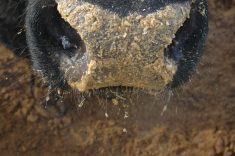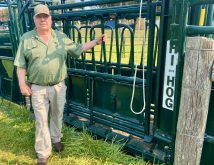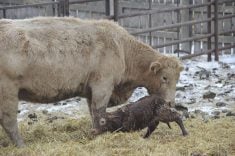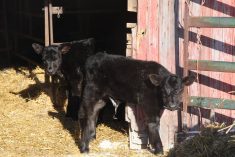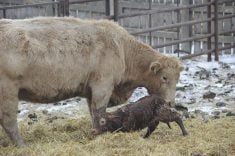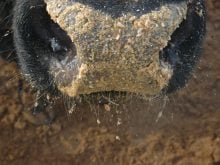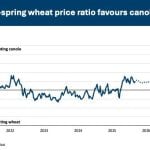Make the grazing plan to suit the land, the people and the animals, advised a grazing management specialist during a webinar hosted by the Beef Cattle Research Council.
“There is no prescriptive grazing plan that works best in every situation,” said Saskatchewan agrologist Jeremy Brown. He has 18 years of experience in the field and advises producers, government and conservation organizations on grazing, land management and water source development.
“The results of having a grazing plan will be better decisions, healthier land and livestock, and better land utilization, which is important as land values are going up,” he said.
Read Also

Beef cattle more prone to trace mineral deficiencies
The trace mineral status of our cows and calves is a significant challenge for western Canadian producers and veterinarians.
Defining goals and objectives for the entire grazing operation is the first step. The plan has to match animal numbers to predicted forage yields.
“It’s not really adequate to try and do a grazing plan just for one pasture or perhaps one of your herds. It’s really important that we take a whole farm approach. So, we want to be looking at our entire operation and how all the pieces fit together,” said Brown.
Depending on resources, a grazing plan can be simple or detailed.
“It may be just some simple decisions or it could be a fully written plan with colourful maps and a binder full of information.”
Brown outlined several common grazing principles:
Appropriate stocking rates
“If you have way too many animals, it doesn’t matter how good you are at moving them from paddock to paddock, you’re still going to have an issue,” he said.
Producers can use a carrying capacity calculator or base stocking rates on past experience. With new pastures, recommended regional stocking rates are available for each province.
Even distribution
A typical (but not absolute) goal is to have forage used evenly so nothing is wasted and no unwanted plant species gain an advantage.
“For example, if you’re managing for grassland songbirds, you may prefer to have patchy grazing because some species would prefer that for their habitat,” Brown said.
Avoid grazing during sensitive periods
“It’s not really just about avoiding grazing at certain times, it’s about understanding how the timing of grazing can affect certain plants or certain areas of your pasture.
“This might include understanding grazing management of alfalfa so that you can minimize the danger of bloat while making good use of the forage, or grazing in the fall as you’re getting close to freeze up so that you’re not subjecting alfalfa to being at a higher likelihood of winter kill.”
Effective recovery between grazing events
“It’s not how short or tall you leave the grass, or how many animals are there. It’s strictly a function of time.
“Are the plants being regrazed while animals are still there, or are we coming back to that paddock before it’s effectively recovered?”
Completing an inventory is the next step.
“This would be including your forage resources and infrastructure, such as fence and water sources, and also the number of animals that you have. So, a complete inventory of what you have to deal with,” Brown said.
A key piece of the plan is monitoring pastures throughout the growing and grazing season, as well as from year to year.
“Just seeing how are the growth rates, what are the trends in pasture health, or what different species are doing in the plant community.
“Monitoring can also include notes, photographs, or more formal assessments,” he said.
Maps are an important tool for developing a plan.
“These could be hand-drawn maps or using municipal maps. There’re all different templates that we can use. Aerial imagery is now readily available to all of us and it really is nice because it helps identify the features in the pastures and can be useful for measuring areas and distances.”
Optimum paddock size is a common question, said Brown.
“Should they be 80 acres, should they be 40 acres? … The point is that we shouldn’t be designing our paddocks just based on an arbitrary size of acres. Rather, we should be planning our paddocks based on controlling the timing of grazing.
“Plus, it should be determined by your forage resources and your herd size, which might change over time,” he said.
Timing is the real key, he added.
“We should control the timing of grazing and use fence to manage like with like. So, we might have paddocks of different sizes and shapes within the same grazing cell.”
Water availability is often a limiting factor.
“Planning water sources should be done before planning fences because obviously you have to have water in every paddock. With more water points, there are more options with grazing.
“The more reliable your water sources are, the less stress you’re going have when it’s dry.”
Brown suggested using a formula to determine the best number of paddocks.
“Recovery period divided by a grazed period plus one. Your recovery period is the average time it takes your pastures to fully recover from a grazing event and your graze period is the maximum number of days you want them in any paddock before it will regrow so that they can be regrazing,” he said.
“For example, if your target recovery period is 90 days, and you want to have a graze period of five days, that would mean you need 19 paddocks to accomplish this.
“For most people when they’re starting out with a scheme of planned grazing like this, they’re not necessarily going to have 19 paddocks and that’s fine. It’s something that you can work towards,” he said.
Electric fencing, whether temporary or permanent, is a powerful tool and economical to build, so it can increase the number of paddocks.
Grazing charts are another good tool.
“One of the nice things about having everything laid out like this is it can make your grazing plan fit the rest of your life. For example, if I know that I need to be near to this corral at a certain date, I can work that into the plan. Or maybe I know I’m going to be away for a week in August for a family function. I can set my grazing plan so that will work well.”
However, the best-laid plans must still be flexible.
“Although we’re going to plan this ahead of time using averages, in reality we have to adjust during the growing season by precipitation and temperature and all of these things. We’re going to be modifying the plan as we go throughout the summer,” he said.
Then there’s the perennial question of when to move livestock.
“We need to look at the paddocks ahead. Have they fully recovered and are they ready to be grazed again? If so, then it’s time to move and if not, then it’s time to move more slowly and graze a little more severely.”
Brown said its helpful to anticipate the timing.
“The rule of thumb is when you have fast growth, you want faster moves and when you’re in times of slower growth, you want slower moves, and always looking to the paddock ahead.
“Now in a way this seems a bit counterintuitive in times of good growth. It’s tempting to leave the cattle there longer because there’s still lots for them to eat.
“There’s a couple of issues with that, though. First of all, if we’re having good growth, these plants are going to be re-growing and we’re going to be taking another bite of them.
“The other challenge can be that the paddocks ahead of us, if we’re moving slowly and they’re growing fast, they can become overly mature and we can be losing forage quality,” he said.
Grazing plans should also allow for exceptional circumstances such as drought, flooding or hail, said Brown.
“A drought plan could include some different options and trigger points. So perhaps we’ll graze more severely on some of the paddocks that are healthy at the moment. Maybe we can find alternate forage or water sources.
“For example, perhaps there’s a hay field that we can graze this year, or maybe some neighbour’s cropland that we could fence and graze.”
He also suggests that producers set a trigger point for destocking.
“It may be that by the middle of June, if we haven’t had X amount of precipitation, that we’re going to start destocking by 10 or 20 percent. Destocking early and not having to destock as much is way better than destocking too late and having to destock heavily when everyone else is doing the same thing.
“It can be a very comforting feeling to see a few animals go on the trailer. And when it’s part of a plan, know that you’re making decisions that are the best thing for your operation.”




